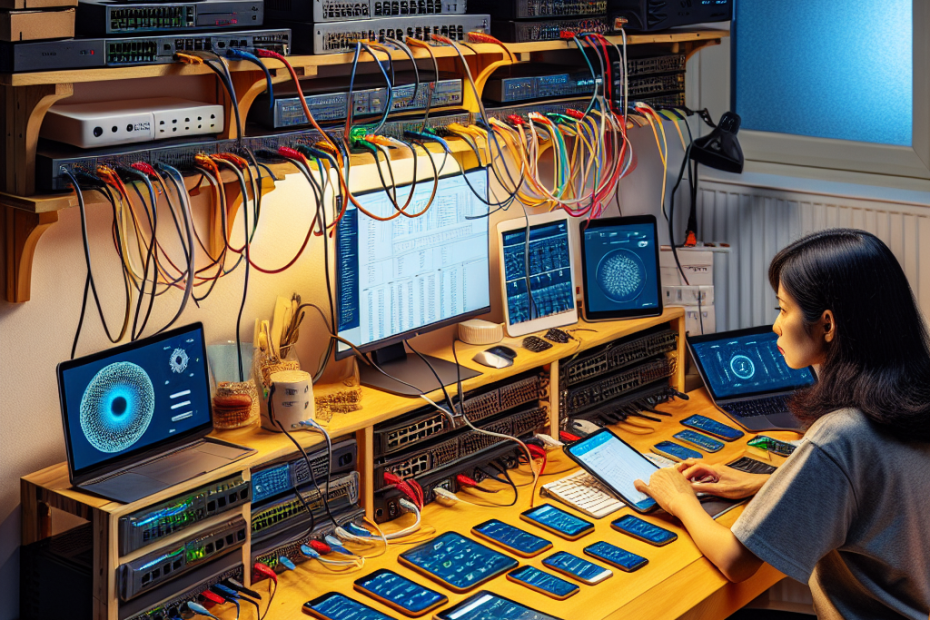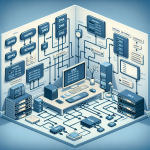Mobile Device Management (MDM) in a Homelab: A Guide to Experimentation and Security
I was thinking about implementing an Mobile Device Management (MDM) for my family, you know not every member of the family is tech people so we need to protect them from malwares, virus, bad web pages and so on.
You can also think it about to protect your children that nowadays are using smartphones and tablets in early ages so it’s a risk to leave the door open to anyone when a child is into your home alone isn’t it?
MDM is an increasingly important tool for managing the multitude of mobile devices that are essential in today’s tech landscape. For tech enthusiasts and system engineers, setting up an MDM solution in a homelab offers an excellent opportunity to explore and understand the complexities of device management, ensuring compliance, and enforcing security policies. In this blog post, we will delve into the core aspects of MDM, focusing on its implementation in your homelab.
What is MDM?
- Purpose: MDM is designed to assist administrators in managing, securing, and monitoring mobile devices. This includes smartphones, tablets, laptops, and other networked devices. Through MDM solutions, organizations can enforce security policies, remotely manage configurations, and monitor compliance.
- Use Cases in Homelabs: In a homelab setup, MDM is useful for simulating real-world scenarios involving company-owned devices, employee BYOD policies, and enhancing security for mobile users. Such experimentation provides insights into enterprise-level practices.
Choosing an MDM Solution for Your Homelab
When it comes to selecting an MDM solution, there are various options available, both open source and commercial. Here are some noteworthy solutions:
- Cloud-Based or Trial Versions of Enterprise MDMs:
- Microsoft Intune: Part of Microsoft’s Endpoint Manager, this solution provides comprehensive device and app management with free trial options.
- VMware Workspace ONE: This tool includes features for device management, user management, and access control, with a trial available for exploration.
- Kandji or Jamf Pro: These are particularly popular for managing Apple devices, both providing trial versions for homelab use.
- ManageEngine: it’s free up to 25 devices but for the numbers of a homelab it’s ok
Setting Up MDM in Your Homelab
Once you choose your MDM solution, the next step involves setting it up. Here’s a basic outline for getting started:
- Installation: Generally, you will need to install the MDM server software on a virtual machine, container, or dedicated server within your homelab. Depending on the chosen solution, this may involve additional setup like a database or a web server.
- Enroll Devices: To get devices into the MDM system, you’ll have to enroll them, which can typically be done through a client app or enrollment methods like QR codes, NFC, or email invitations.
- Configure Device Profiles: Create profiles that dictate settings like Wi-Fi configurations, email accounts, VPN access, and security policies tailored to your homelab setup.
Enforcing Security Policies
Security is a critical aspect of any MDM implementation. Here’s how to enforce necessary security protocols:
- Password and Lock Policies: Set strict requirements for device passwords, including complexity and expiration, along with automatic screen lock functionality.
- Remote Wipe and Lock: Establish policies to enable remote wiping and locking of devices in case they are lost or compromised.
- Data Encryption: Make sure to enforce encryption for both device storage and communications, significantly lowering the risk of data breaches.
- App Management: Control app installations and manage permissions; you can set up whitelists and blacklists to prevent insecure apps.
Application and Content Management
MDM solutions also help manage applications and content across devices effectively:
- App Distribution: You can push applications directly to devices or create a self-service model allowing users to install approved apps, which is particularly useful in BYOD scenarios.
- Content Management: Securely distributing corporate content like documents and files is essential, ensuring sensitive data remains protected across devices.
- Containerization: Implementing work profiles can separate personal and work data on devices to minimize data leakage risks.
Compliance and Monitoring
Keeping track of device compliance is another critical function of MDM:
- Compliance Rules: Establish compliance checks for operating systems, security updates, and app versions, ensuring devices remain secure.
- Device Monitoring: Tracking device status, including location and battery health, is essential—most MDM tools offer dashboards for this purpose.
- Automated Alerts: Configure alerts to notify you of non-compliant devices, enabling quick remedial actions.
User Management and Access Control
Effective user management is vital for maintaining security:
- Role-Based Access Control (RBAC): Define roles with specific permissions and assign these to various users to simulate different access levels.
- Single Sign-On (SSO) Integration: If your MDM solution allows, integrate with SSO for seamless user authentication.
- Access Policies: Test access control policies based on location, network, or time to simulate real-world security measures.
Testing and Experimentation in a Homelab Environment
Your homelab is the perfect playground for testing various MDM scenarios:
- BYOD Scenarios: Implement different levels of access and restrictions for personal devices to simulate real-world BYOD policies.
- Testing Security Scenarios: Experiment with policies related to device loss, remote wipe, and compliance violations to better understand the MDM’s critical role in security.
- Simulate Application Updates: Roll out app updates and manage old or unapproved applications to understand their effects on device performance.
Tips and Best Practices for Homelab MDM
- Start Small: Manage a single device initially and expand as your familiarity grows.
- Document Configurations: Keeping a record of your profiles, policies, and processes will prove beneficial for real-world applications and troubleshooting.
- Monitor and Review Logs: Regularly checking device logs will help in identifying potential issues or usage patterns.
- Automate Where Possible: Take advantage of APIs for automating mundane tasks around updates and compliance checks.
Exploring MDM within a homelab provides you with invaluable hands-on experience. This not only enriches your understanding of device management but also prepares you for real-world applications of security policies and compliance management. As technology continues to evolve, mastering these skills will be increasingly essential for any IT professional. Feel free to leave your comments or share your experiences with MDM in your homelab below!



